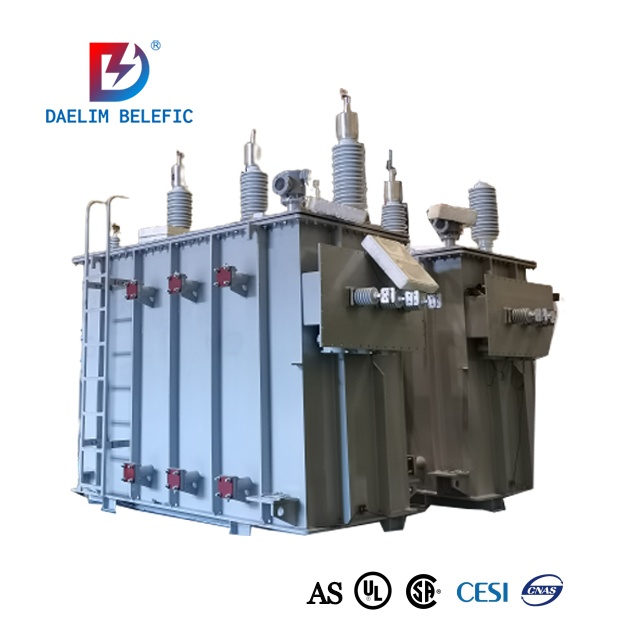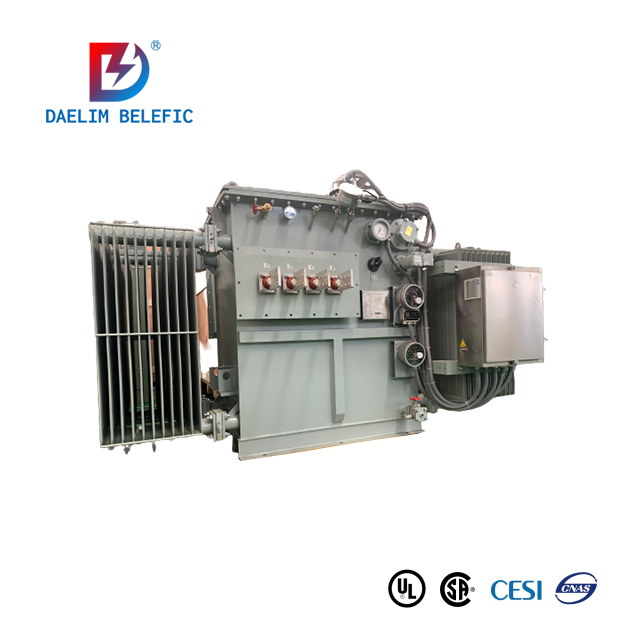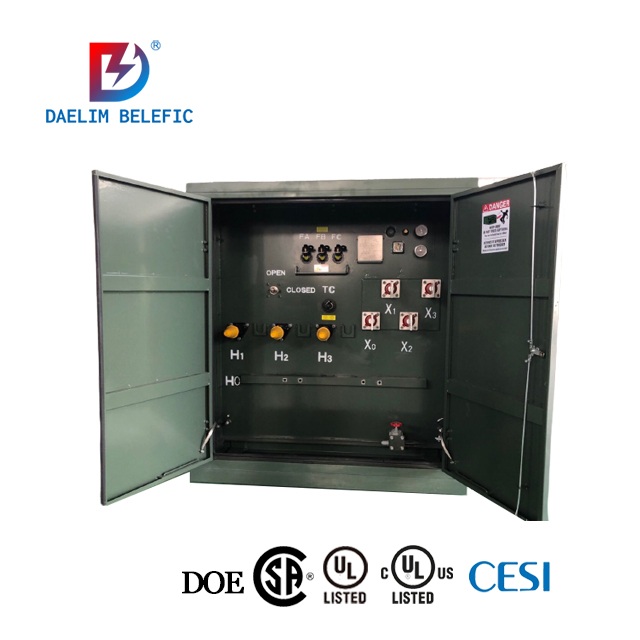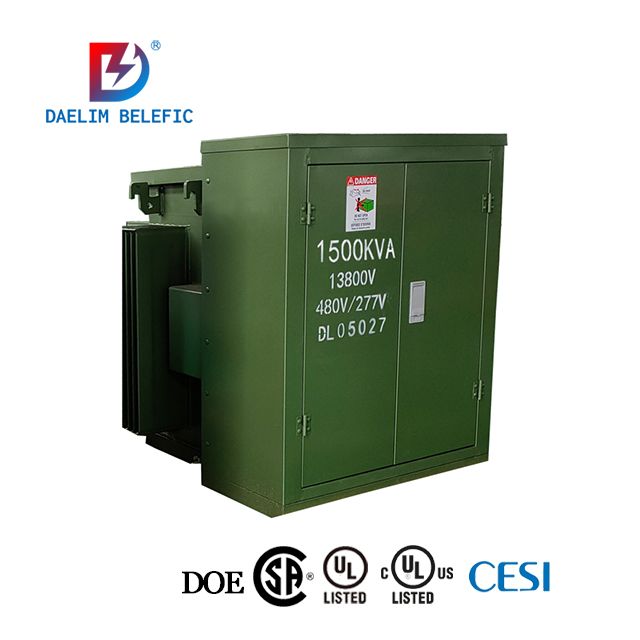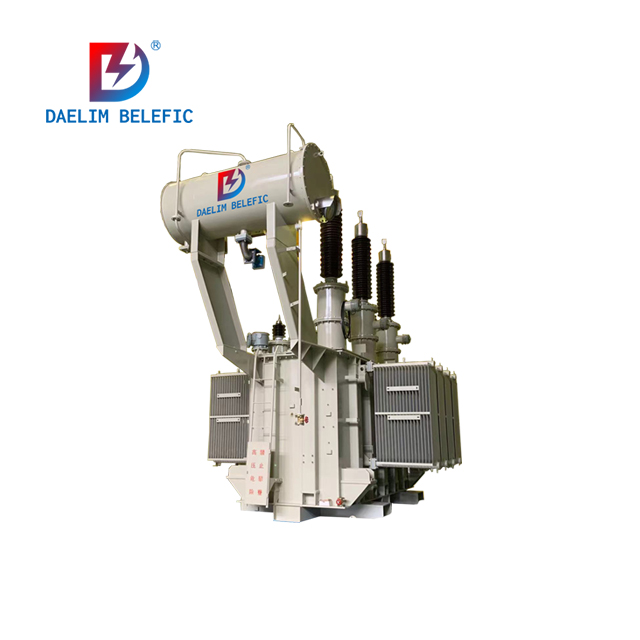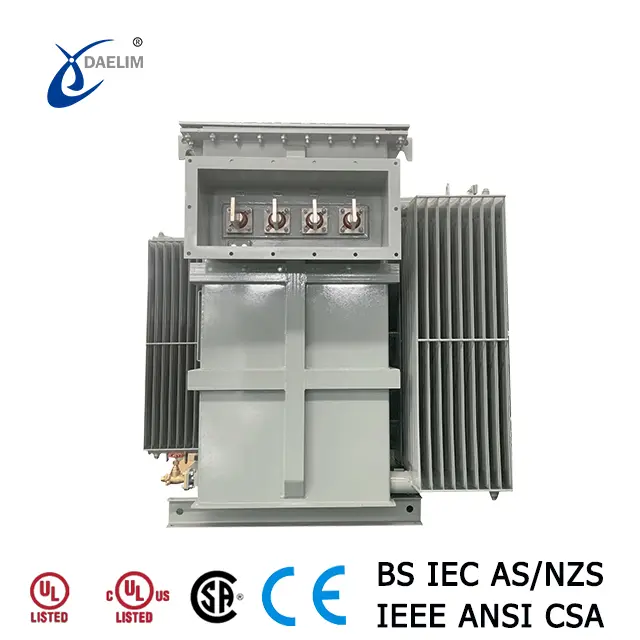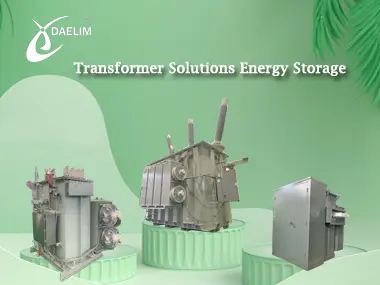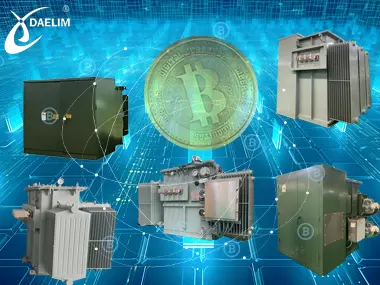The Ultimate Guide to Energy Storage

Daelim's mission is to provide dependable and affordable energy options. With expertise in solar and battery energy storage, Daelim offers effective solutions. Their industry experience and technological prowess enable international expansion. Daelim's power transformers find applications in utility-scale and smart grids, industrial and commercial energy storage, residential systems, and emergency power.
The best method of energy storage solution may vary from situation to situation. Many energy storage options exist, each with its own set of benefits and drawbacks. Not all forms of energy storage are generally created equal.
In this guide, we will discuss the different kinds of energy storage solutions and how these approaches affect the environment. We will also talk about how transformers could be one of the efficient ways in providing renewable energy storage solutions.
Contact Daelim TransformerWhat Is Energy Storage?
Energy storage is the process of storing energy for later use.
Generally, energy storage systems can turn their stored power back into usable forms at a later time.
Additionally, energy storage may have surprisingly positive effects on the environment.
For example, there will be a bigger chance of renewable energy sources to the power system if electricity storage were technically used.
Electricity storage allows power plants to function more efficiently by reducing their reliance on less efficient generators during times of high demand.
Therefore, the construction of new power plants, and transmission and distribution infrastructure can be now avoided thanks to electricity storage.
Energy can be typically stored in a variety of ways. These include:
- Pumped hydroelectric
- Compressed air
- Flywheels
- Batteries
- Thermal energy storage
However, there are also negative effects of energy storage. For example, batteries include elements like lithium and lead that can be harmful to the environment if they are highly disposed of or recycled incorrectly.
In most cases, as energy is being practically stored, part of it is being lost as heat.
What Are Energy Storage Solutions Devices?
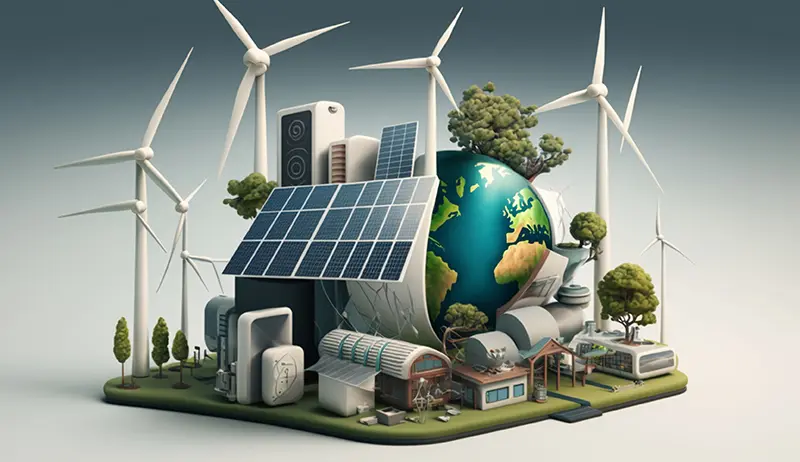
Energy storage solutions devices include fuel cells, batteries, capacitors, distribution power transformers, flywheels, compressed air, pumped hydro, hydrogen etc, They all can be mainly used to store a wide variety of forms of energy, including electrochemical, kinetic, pressure, potential, electromagnetic, chemical, and thermal. Energy storage devices are beneficial because they keep the lights on during brief periods of grid instability.
They also provide a bridge for backup technologies to become operational and expand to full capacity. Electrical and thermal energy storage devices have been generally considered crucial to the success of the clean energy movement.
Moreover, energy storage devices can be valuable in decentralized renewable energy storage solutions. They can be highly used to boost the output of renewable power in systems without backup power plants. When coupled with a power transformer, they help in fuel conservation by shouldering the bulk of the load during times of low electrical demand. At least, when the power transformer is at its least efficient.
Lastly, energy storage has the additional benefit of reducing the frequency with which a transformer has to kick on by leveling out fluctuations in production from renewable power.
Is It Possible To Use A Transformer To Store Power?
 No, a transformer's sole purpose is to act as a channel for electrical current. To work, it needs a coil, but the energy it stores and sends to another coil quickly dissipates. As energy is still conserved, the same amount of power can enter and leave an electrical circuit. The transformer is only a device and does not collect or store energy.
No, a transformer's sole purpose is to act as a channel for electrical current. To work, it needs a coil, but the energy it stores and sends to another coil quickly dissipates. As energy is still conserved, the same amount of power can enter and leave an electrical circuit. The transformer is only a device and does not collect or store energy.
However, there are low-voltage transformers called energy storage transformers that maximize the usefulness of batteries as an energy storage medium.
Some of these low-voltage transformers are:
- Solar Transformer
- Bess Transformer
- Wind Power Transformers
In addition, transformers increase or decrease voltage to transmit electricity from power plants to buildings. In terms of electrical efficiency, transformers are among the best, with a typical figure of over 97%.
At the beginning of 2016, the United States Department of Energy enforced new efficiency criteria for transformers. Although building owners are not mandated to replace old transformers, any new transformers placed in a building must meet or surpass the standard's minimum efficiency values.
You may enjoy: 3 Phase Pad Mounted Transformer
How Long Does A Transformer Retain Its Charge?
If the wires are superconducting and you short them together, transformers can retain their charge. A transformer consists of two inductors that are magnetically coupled together. All inductors use a magnetic field to store energy. This is most obviously the case with direct-current magnets like an electromagnet.
Energy is technically stored in the magnetic field as the current increases from zero, either as a magnetic charge or flux. But, if you connect the terminals in a short circuit, the current will continue to flow through the magnet. They are superconducting, meaning they can maintain a magnetic field and current for an extended period of months.
What Is The Role Of A Solar Transformer?

A solar power transformer is essential for harnessing solar energy. Before the electricity produced by solar panels can be directly used, the direct current (DC) voltage must be mainly converted and boosted by a solar transformer. Nonrenewable energy was formerly converted using a step-up or step-down transformer.
Additionally, a solar installation's transformer must be rocking solid and durable for the long haul.
In Solar Power Facilities, What Kind Of Transformer Cores Are Often Used?
A utility-scale solar power facility will apply one of three different transformer types.
Air-Cooled Transformers: Range of 5kVA to 10kVA
Powers site amenities including lights and SCADA equipment.
Oil Cooled Transformers: Transformers with oil cooling are often utilized for power connections ranging from 500kVA to 3MVA.
- The KNAN-type transformer is usually applied here. Synthetic or natural esters are also used in place of mineral oil in ONAN transformers.
- The flash point of these esters is 300 degrees Celsius, but mineral oils are just 200 degrees Celsius.
- Because they break down naturally, these esters are likewise safe for the planet.
- They are capable of operating between 15 and 35 kilovolts.
Generation Step-up transformer: Requires power exceeding 3MVA
(ONAN/AF/AF): They support three distinct modes
- Up to 12 MVA Oil-Free Natural Air (ONAN)
- Low-power fan powered by oil natural air forces (ONAF) up to 14MVA.
- ONAF- The same as the last, but with more powerful fans; utilized for connecting power of 16 MVA and above.
Learn more about ONAF Transformer
Structure Of The Solar Transformer
The solar transformer follows industry standards in terms of its machine housing, winding, and steel core.
There is a specific structure related to the design of the solar panel system.
- A 1,000 kVA solar transformer can be usually achieved by combining two inverter windings into a single transformer tank.
- The size of a solar inverter can vary between 50 (kVA).
- The versatility of a transformer is always determined by the number of windings it has.
- Adding a lengthy wire for DC-to-AC conversion increases design complexity.
- The maximum size of a photovoltaic system is gradually limited by the dimensions of the inverter.
- To switch from direct current to alternating current, a huge box and an intricate network of cables are necessary.
Principle Of Operation Of Solar Transformers
Photovoltaics can directly transform the sun's rays into power. They are effective because of the photovoltaic effect. Certain substances absorb light and then give out electrons when subjected to sunlight. The term "photoelectric effect" describes this phenomenon.
Before the DC electricity is usually sent into the electrical grid through an inverter, it is first passed through a solar transformer to boost its voltage. Distributed photovoltaic (DPV) power systems necessitate transformers that are compliant with IEEE C57.159 2016. Due to constraints on the power rating and voltage level of the inverter system, one or more inverters are generally linked to the secondary winding of solar transformers.
Check Daelim Solar Photovoltaic System Solution
What Is Battery Storage?
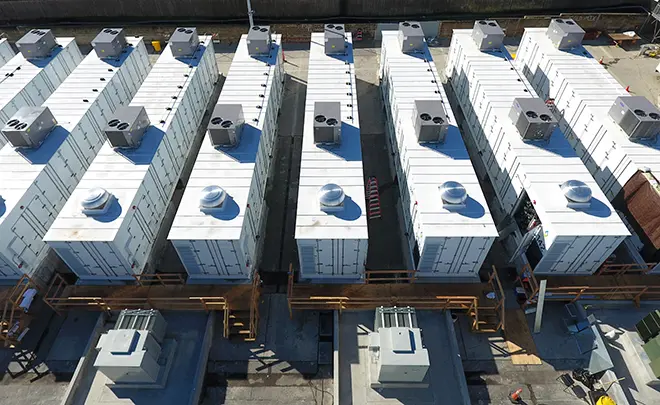
Solar panels and the grid may supply electricity to rechargeable batteries, which can then be usually used to power homes and other buildings at a later time. Moreover, energy storage devices that rely on batteries have several applications. These include, peak shaving, load shifting, emergency backup, and grid services are all examples of typical commercial uses.
For home applications, it can be mainly used for personal means, off-grid housing, and as a safety net in case of disaster.
What is A BESS Transformer?

BESS stores energy from the power grid or renewable sources like power transformers using battery storage technology. Then, batteries use the stored energy when they need to, like when the power goes out or when there is a lot of demand. Three-phase BESS transformers are autotransformers generally used in situations where voltage isolation is unnecessary but voltage regulation is important.
Role Of Transformer To BESS Projects
A large-scale BESS can't function without a connection to the existing electrical grid. This connection is possible because of power conversion and transformation that occur electronically. There is a need for transformers for all network voltages since the BESS power output must be compatible with the network voltage.
A successful BESS installation requires careful consideration of the cost and time necessary for transformer connection operations. The installation of a new, specialized transformer may not be usually required if an existing transformer connection in the substation can handle the expected BESS capacity.
What Is A Wind Power Transformer?
 Transformers are generally used to increase or decrease the voltage of power generated by wind turbines so that it may be technically transmitted over high-voltage lines and cables. The base of each turbine is an excellent spot for this equipment. In certain countries, they are generally referred to as pad mount transformers. To meet regional electrical standards, it may be necessary to enclose the transformer with GRP or concrete.
Transformers are generally used to increase or decrease the voltage of power generated by wind turbines so that it may be technically transmitted over high-voltage lines and cables. The base of each turbine is an excellent spot for this equipment. In certain countries, they are generally referred to as pad mount transformers. To meet regional electrical standards, it may be necessary to enclose the transformer with GRP or concrete.
Some larger turbines have a higher generating voltage—around 3 kV. However, this is still insufficient for strong and large wind turbines.
Thus, each turbine needs an MV step-up transformer and MV switch to convert the low-voltage output.
Nonetheless, many turbines today have a transformer as standard equipment.
With the help of transformers for wind power, a turbine with MV voltage magnitude (typically between 10 and 35 kilovolts) may bypass any intermediary equipment and connect directly to the MV wind farm network.
Reading more about Wind Power Transformer
In A Wind Turbine, What Role Does The Transformer Play?
A transformer is a device that converts the alternating current (AC) voltage of an electrical supply. At a wind farm, the power losses that occur while sending a lot of electricity via transmission lines are typically reduced by increasing the voltage with a step-up transformer (thus decreasing the needed current). To make energy use in homes and businesses, it must first usually be changed by transformers, which lower the voltage.
On the other hand, a substation is a point where the regional power grid connects with the local distribution system. Substation transformers reduce the high voltage at the substation so that it may be safely sent to buildings.
Thus, power transformers are a contributor to energy storage for wind turbines and farms.
What is The Role of a Transformer As Energy Storage Equipment?
Energy storage technologies are essential for the adoption of clean energy and the ultimate displacement of fossil fuels. In addition, battery storage devices, such as transformers will play a crucial role in the future as a link between renewable energy generation and demand response. Renewable energy sources, such as solar and wind, may be generally stored in batteries and released when demand is highest (BESS).
Overall, it is impossible to transfer huge amounts of electric power over long distances without using power transformers. Their mean principal job is to convert electrical power into high-voltage current and afterward step it down to a safer low-voltage current.
What Is The Future Of The Transformers for Energy Storage Systems?
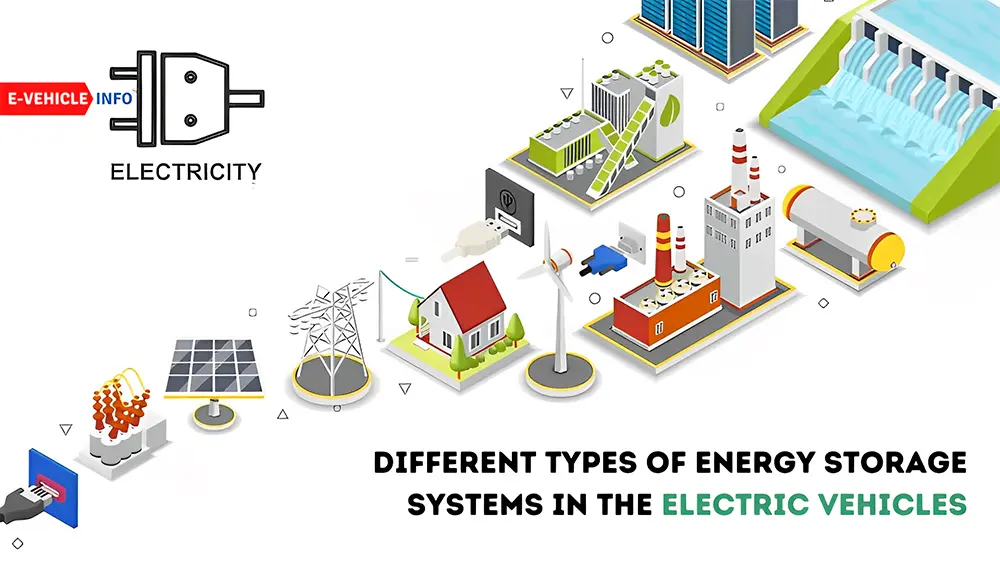
Renewable sources of energy, such as wind and solar, will provide the majority of the world's electricity very soon. As a result, there will be a dramatic cut in emissions of greenhouse gases. For solar power and wind power DPV transformers to work reliably in challenging environments, they need to be highly constructed with particular characteristics in mind.
Several distinct characteristics of transformers have been widely produced by manufacturers in recent years. Thus, strong smart transformers with fresh key features need to be potentially linked with the growing smart grid.
While we don't yet know the outcome, early signs are promising. To overcome the challenges that lie ahead, the transformer industry will need to work together to flourish.
What Are The Technological Approaches For Renewable Energy Storage Solutions?
From the early days of electricity, people have been looking for better ways to store energy. 
Because energy needs and technological possibilities have changed so dramatically over the past century, the energy storage business has had to constantly evolve, adapt, and innovate.
The usage of energy storage devices may help with power outages, high utility prices, and the purchase of green energy.
To help narrow down the renewable energy storage solutions, we've organized them into four broad classes:
Battery Energy Storage Solutions
One of the most effective energy storage alternatives for low- to medium-scale applications is battery energy storage solutions.
Because of their great round-trip efficiency, they can efficiently store and release energy.
As you can see, batteries may be generally used to store energy generated from renewable sources like solar, wind, and hydro.
That is where power transformers come in.
Power transformers are essential for transmitting large amounts of electricity across great distances. Their primary function is to take high-voltage electricity and reduce it to a more manageable low-voltage current.
Nonetheless, lead-acid batteries are the best option in most cases because of their cheaper cost per kilowatt-hour of capacity.
Renewable energy suppliers are a good source for battery energy storage solutions since they often supply them, and because they are efficient and safe for the environment.
To put it simply, renewable energy sources like wind and sun are mainly used to charge the batteries in the storage system.
When necessary, it releases the accumulated energy.
These battery storage devices are essential for encouraging businesses to adopt green energy practices.
Thus, decreasing the pace at which carbon dioxide is usually generated.
When there is no sunlight or wind, a battery storage system keeps the lights on.
Overall, the most common kind of energy storage solutions are still batteries, especially lead-acid batteries.
The cycle life, round-trip efficiency, energy density, charge and discharge rate, and cold-weather performance are all inferior to those of many competing battery types.
Solar Energy Storage Solutions
Solar energy storage is generally used to describe the practice of storing solar energy, often in the form of electricity.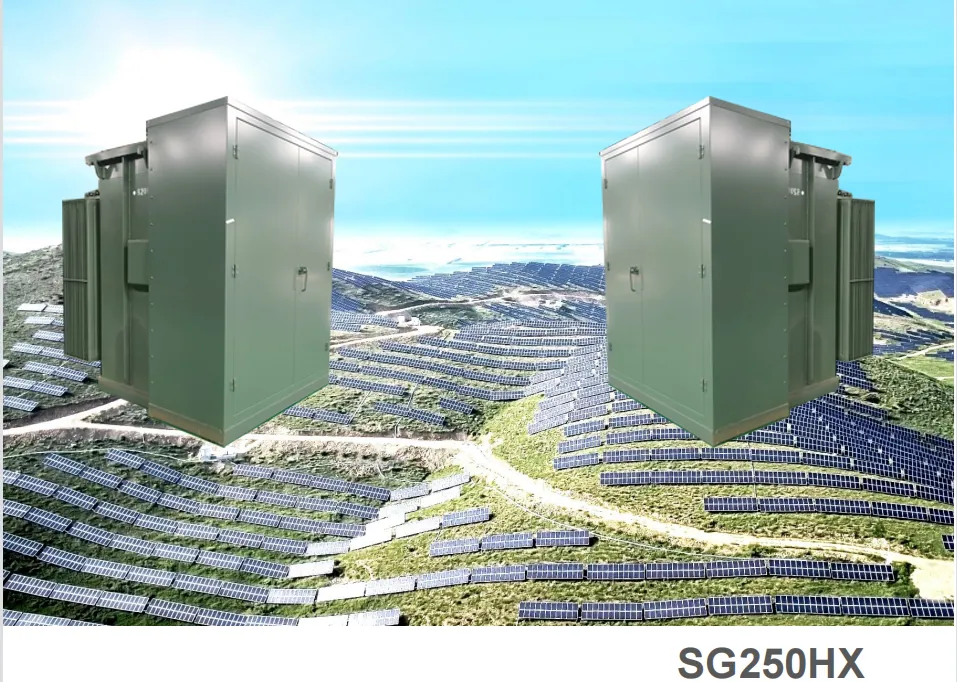
Batteries, thermal storage devices, and hydrogen fuel cells are just a few examples of how this might be usually accomplished.
The purpose of solar energy as renewable energy storage solution is to provide a constant supply of electricity even when the sun isn't out.
This can improve solar power systems' overall efficiency and efficacy and make them applicable to more situations.
Concentrated solar power (CSP), as the solar thermal form, is well suited to thermal solar storage.
Several people who have invested in solar panels are now investigating battery storage options for when the sun goes down or there's a blackout.
A solar-plus-storage system is simply a solar system, like a photovoltaic (PV), that is usually linked to a battery system.
Using solar-powered batteries is the future.
Without a solar battery, a home with solar panels is typically limited to either selling the excess power to the grid or using the electricity inside.
In most cases, to convert solar energy into a usable form, a solar power transformer is necessary.
A solar transformer is primarily responsible for converting and boosting the direct current voltage of energy generated by solar panels before it can be first utilized.
On the other hand, depending on the quality of the panel and the lighting conditions, the efficiency of solar energy storage solutions can be anywhere from 12 to 22%.
This may not seem like a good deal, but keep in mind that solar panels have no moving components and can be frequently installed in unused spaces such as on roofs.
Hydro Energy Storage Solutions
Pumped hydro storage is a method of storing energy that makes use of two water reservoirs at different elevations.
When it comes to dealing with the intermittent nature of renewable energy sources like solar and wind, pumped hydro is a tried-and-true solution.
To create electricity, water is typically pumped from a lower to an upper reservoir using extra energy, and then the water is then allowed to flow back down through a turbine.
When it comes to storing energy, hydro has a lot going for it. It's low-priced, long-lasting, and capable of storing a lot of energy.
It can also be highly applied to supply grid functions like frequency control.
However, it does have certain restrictions.
For instance, a huge quantity of water and a site with a significant elevation difference between the two reservoirs are necessities.
It can also have unfavorable effects on the environment, especially aquatic habitats.
To increase the voltage at the transmission station of a hydropower plant, a step-up transformer is necessary.
In this event, the low-voltage alternating current produced by the hydroelectric power plant is highly amplified by an electrical transformer.
Thus, it aims to provide a much higher voltage for use in the rest of the power grid.
When the transformer modifies the power supply, it is then fed into the grid and sent to homes and businesses.
In addition, they have a high energy density, which allows them to pack more energy into a given volume.
Pumped hydro storage is often regarded as one of the most effective options for energy storage solutions.
It can store energy for long periods and has a high round-trip efficiency. However, new energy storage is now gradually replacing pumped storage to protect the environment.
Try for free: Technical Standards for Transformers Across The Globe
Wind Power Storage Solutions
Next up comes wind power, which is mainly capped at an efficiency of 59% by a phenomenon called the Betz limit.
Since stalling occurs when downstream air travels at a lower velocity than upstream air, this limit has been mainly established.
In ideal conditions, well-designed turbines may reach efficiencies of up to 50%, although most only manage 35% to 40%.
Wind energy is also one of the renewable energy storage solutions.
As others say, the wind is free fuel, and cheap electricity, and is available in many more locations throughout the world than fossil fuels are.
Some regions pay so much for fossil and nuclear electricity now that the additional cost of offshore wind is still lower than what they are paying.
Hence, it makes offshore wind and solar installations more viable.
With the help of a transformer, it can increase the voltage of wind farms to mitigate the power losses that occur while delivering large amounts of electricity through transmission lines.
Transformers lower the dangerous high voltage before it is mainly distributed to nearby structures.
Hence, power transformers help wind farms and turbines store energy.
If you're looking for a reputable renewable energy storage solutions company around Asia, Daelim is your best manufacturer.
What Is The Most Efficient Energy Storage System?
The most effective method of energy storage will vary from case to case.
In most cases, Hydro pumping is often regarded as the most effective method.
The massive, stiff pipes aren't attractive, but other than that, it's not bad for the environment.
The CSP solar plant uses molten salt technology, which is efficient since the extra heat may be typically stored as heat as well.
Nevertheless, the best strategy for energy storage will depend on the type of energy to store and the needs of the application.
Depending on the use case, other renewable energy storage solutions
techniques like flywheels, compressed air energy storage, and thermal energy storage can also be effective.
By all means, the best energy storage system will vary by use and setting, and it is essential to think about things like price, efficiency, scalability, and environmental effect while making a decision.
Keep reading: Everything You Need to Know About Transformer Manufacturers In Canada
How Does A Transformer Conserve Energy?
A transformer has consistent input and output power.
With a step-up transformer, the input and output powers remain constant because the current provided by one end decreases as the voltage rises.
Hence, we are not breaking the energy conservation law.
The method by which energy is usually exchanged between the coils of a transformer is the key to comprehending how it is mainly conserved.
As the energy is generally transferred from one coil to the other, the amount of energy entering the main coil is the same as the amount leaving the secondary coil.
This indicates that the transformer meets the principle of conservation of energy, as the input power is equivalent to the output power.
This indicates that the transformer is functioning as highly intended and that energy may be then transferred across circuits effectively.
What Is The Role Of Transformer As an Energy Storage Solution?
When there is a rapid change in the stored energy, power transformers, which are also energy storage devices, exhibit transient behavior of the terminal conditions.
Such situations may occur during the rapid increase in terminal voltage, the power source of a parallel transformer, or the short-circuiting of a transformer.
A transformer is generally used to enhance (step up) or reduce (step down) the voltage in an alternating current circuit.
This is what wind turbines, solar panels, and hydro panels for transformers are generally used for.
From the utility company to the end consumer, all power transmission requires a distribution transformer.
The output of this machine may be also matched to the output of a known power source to see how efficient it is.
A transformer's outstanding efficiency stems from the fact that it applies magnetizing processes to complete its tasks and has no moving components.
Because of the volume of power that the transformer processes, even small gains or losses in efficiency can have a significant effect on ongoing expenses.
Transformers Solutions for Industrial and Commercial Buildings
Why do large-scale photovoltaic power plants need supporting energy storage?
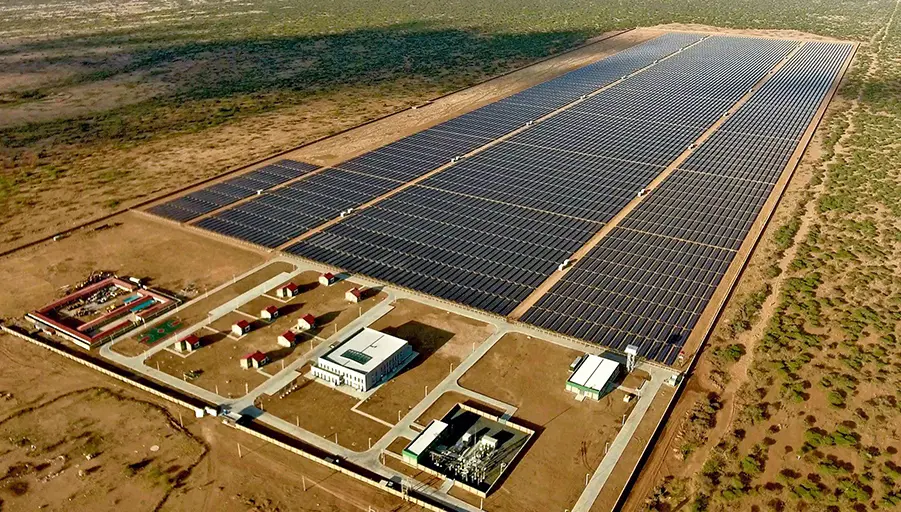
Large-scale photovoltaic power plants often require supporting energy storage systems for several reasons:
Smoothing Power Output: Solar energy production is intermittent and depends on factors like weather conditions and daylight availability. Energy storage allows excess electricity generated during peak times to be stored and used during periods of low or no sunlight. This helps to balance the supply and demand of electricity, ensuring a more consistent and reliable power output.
Time-Shifted Energy Delivery: Energy storage enables the time-shifted delivery of solar energy. Excess energy generated during the day can be stored and used during the night when solar generation is not available. This helps to maximize the utilization of solar power and reduce reliance on other energy sources during non-daylight hours.
Grid Stabilization: Large-scale photovoltaic power plants can introduce variability and fluctuations into the power grid due to the intermittent nature of solar energy. Energy storage systems can provide fast response times, injecting power into or absorbing power from the grid when there are sudden changes in electricity demand or supply. This helps to stabilize the grid and maintain a consistent frequency and voltage level.
Emergency Backup: Energy storage systems can serve as backup power sources during emergencies or grid failures. In the event of a power outage, the stored energy can be used to provide electricity to critical infrastructure, such as hospitals, emergency services, or essential facilities, ensuring continuity of operations.
Overall, energy storage systems complement large-scale photovoltaic power plants by addressing the intermittent nature of solar energy, improving grid stability, and providing backup power capabilities. They contribute to more efficient and reliable integration of renewable energy sources into the electricity grid while reducing carbon emissions and promoting sustainable energy practices.
Get it now: A Comprehensive Guide to Transformer Specifications
Where Can You Find Trusted Solar Transformer Manufacturers?
When it comes to solar energy, Daelim is your one-stop shop for power transformers, components, replacement parts, and services.
We also provide high-quality transformers for use in wind power generation equipment.
Daelim's transformer production capacity across the world enables the company to locate factories adjacent to solar power plants.
Daelim's expertise and originality in power transformers, IEC/IEEE standard, might improve the sustainability, efficiency, and affordability of solar energy.
As you can see, Daelim's transformer technology is remarkable in its solar-related applications.
You may rely on us to supply the necessary natural and synthetic ester fluids and dry technologies without sacrificing safety or concern for the environment.
We provide a comprehensive suite of digital transformers solutions that may raise your profitability, decrease the chances of unscheduled outages, and enhance your capacity to schedule and prevent unscheduled downtime.
Related Products
Related Article
Daelim Transformers Solutions For Energy Storage
Transformers in Energy Storage Systems play a crucial role in renewable energy generation and storage systems by changing the voltage and current levels. In renewable energy generation systems, transformers are used to increase the voltage from low to high levels to transmit energy to the grid. This reduces transmission losses and resistance, thereby decreasing the cost and increasing the efficiency of energy.
Daelim Transformers Solution For Renewable Power Plant
Daelim's versatile, reliable, and high-quality transformer solutions are ideal for renewable power plants. Whether it's for solar energy plants or wind farms, Daelim's expertise in transformer technology can help produce clean energy that can be efficiently and reliably delivered to the electrical grid.
Transformers Solution For Data Center and Blockchain
Daelim Transformer is UL Listed transformer manufacture, understands their crucial role in powering data centers and blockchain. They have been offered transformers to numerous top blockchain companies in North America, ensuring a stable and reliable power supply. With high electricity demands in these industries, Daelim Transformer's solutions support efficient operations.


